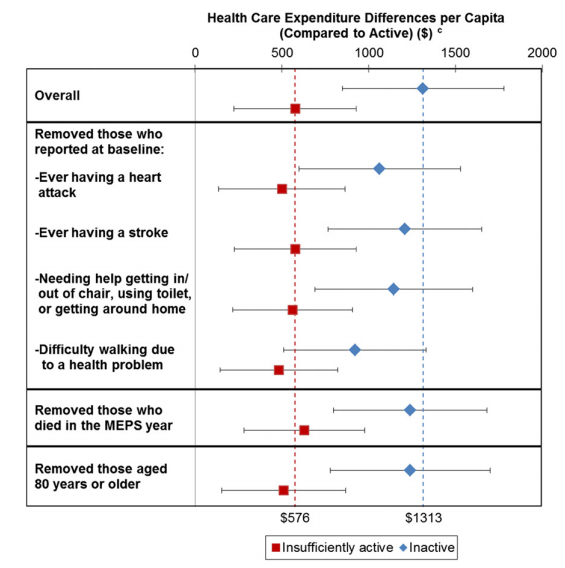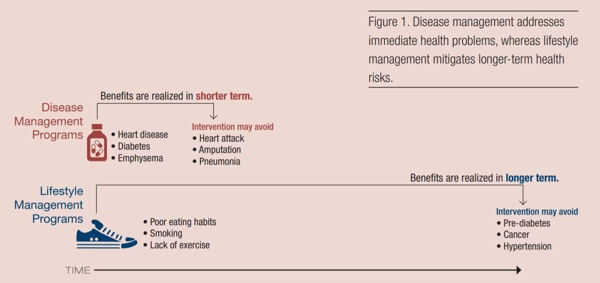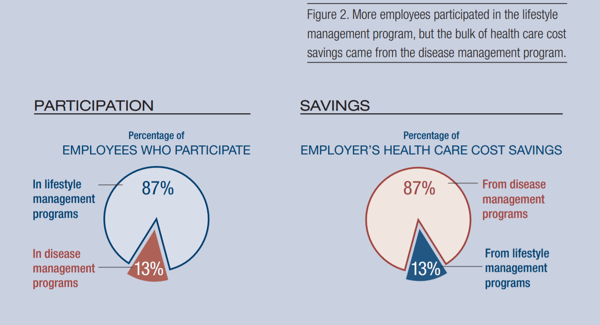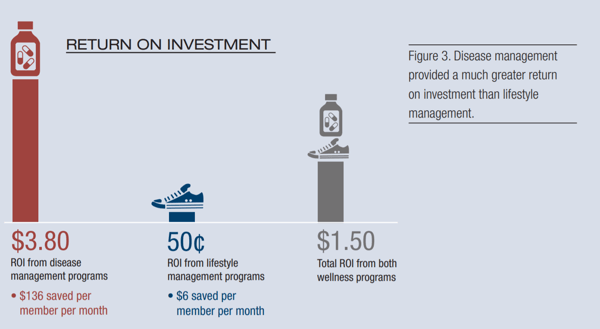3 Studies Show Wellness Companies Can Reduce Healthcare Costs

There’s some debate about whether wellness programs can effectively reduce healthcare costs. These 3 studies from the CDC, RAND and HBR demonstrate the effectiveness and ROI of workplace wellness.
In the last few years, there’s been debate over whether wellness companies and their workplace health and wellness programs reduce company healthcare costs. While some recent studies appear to suggest that workplace wellness programs fail to provide an ROI for employers, critics argue that the studies were focused on targeting more traditional, broad-based programs that lack the degree of intensity, duration, sophistication, and focus of more advanced workplace wellness programs.
Below, we’ll go over 3 examples of reputable studies that show how wellness programs DO, in fact, reduce healthcare costs and explore the key takeaways for wellness providers and employers.
1. CDC Study: Unhealthy Behaviors and Healthcare Cost
In 2016, the Centers for Disease Control and Prevention (CDC) published a study on the relationship between ”Inadequate physical activity and healthcare expenditures in the United States.” The researchers found that individuals who didn’t exercise spent $5,813 per year on healthcare costs, while those who exercised between 0 and 150 minutes per week spent $5,076 per year. Those who exercised more than 150 minutes per week only spent $4,500 annually. Overall, the study demonstrated that sedentary adults spent, on average, $1,313 more on healthcare every year compared to active adults.
While the CDC study doesn’t directly show how wellness companies reduce healthcare costs for businesses, it does show that unhealthy behaviors are associated with increased healthcare costs. To put things in perspective, according to the CDC, 11.1% of healthcare costs in the United States are related to inadequate physical activity. In 2018, the United States spent $3.6 trillion on healthcare. Inactivity, therefore, is responsible for $333 billion ($3 trillion x 11.1%) in healthcare costs.
By adopting healthy behaviors like promoting physical exercise, employees can reduce the chances of chronic disease and overall health risks, which results in lowered healthcare costs for employers.
2. RAND Study: Disease Management and Healthcare Costs
In 2014, a RAND study titled “Do Workplace Wellness Programs Save Employers Money” challenged skeptics who argued that the ROI on wellness programs failed to justify their costs.
While the study showed a clear relationship between health and healthcare costs, it also showed that most healthcare savings come from disease management programs, even though most money is spent on lifestyle management programs. Lifestyle management does mitigate long-term health risks, but disease management addresses immediate health problems that can be very expensive in the short term.
While the two programs together reduced the average healthcare costs by $30 per employee per month, the disease management program provided 87% of the savings. The program saved a whopping $136 per employee per month, adding up to significant annual savings for companies with even a few employees.
The RAND study shows that employers should first understand their goals when it comes to deploying a wellness program. If they want to improve long-term employee health and productivity, then they should incorporate a lifestyle management program. However, if employers are keen to see a strong and immediate ROI for healthcare costs, they should help employees manage their chronic diseases.
3. HBR Study: Health-Coaching and Healthcare Costs
In 2018, the Harvard Business Review (HBR) argued that the inconsistent and conflicting results concerning the benefits of wellness programs are not necessarily due to the wellness programs, but rather, our industry’s inability to measure and define well-being comprehensively. 
For example, when an employee succeeds at losing weight, they may not only feel happier, but often report better sleep, increased energy, and experience a more positive outlook. Wellness program impact analyses generally take into account only the specific metric measured, however, despite the multi-faceted impact of a given metric that may branch out into other aspects of an employee’s life.
HBR, therefore, partnered with WebMD Health Services to build another model to assess the impact of health coaching. The idea was to see whether a one-on-one offering that employers include in their well-being programs to support employees to make health-related behavior changes translated into an improvement in overall health status. They found that coaching made a difference. After 12 months of coaching, the savings in medical costs were about $195 per participant. For those who received condition management coaching, employers were looking at an annual cost savings of $1,113 per participant.
Despite the debate and skepticism over wellness programs by some critics, according to Michael C. Sokol, Chief Medical Officer for WebMD Health Services, “Employers continue to invest in well-being programs, and with good reason. Making well-being a business priority can improve the lives of employees, infuse workplace culture with greater positivity, energy, and commitment; reduce health care costs, and potentially help transform health in the United States and elsewhere.”
Summary
Despite skepticism over the benefits of their programs to companies and their employees, it’s impossible to deny that health and wellness programs really do have many benefits, both financial and otherwise. Wellness companies can learn from the above 3 studies and leverage the lessons from these findings to improve their programs and educate existing and potential clients on these benefits.
If you’re a wellness provider interested in learning more about how we can help you implement effective wellness programs (and grow your business) that will give you a positive ROI and reduce healthcare costs for your clients, contact CoreHealth now!
About CoreHealth Technologies
CoreHealth Technologies Inc. is a total well-being technology company trusted by global providers to power their health and wellness programs. Our wellness portals help maximize health, engagement and productivity for 3+ million employees worldwide. We believe people are the driving force of organizations and supporting them to make behavior changes to improve employee health is in everyone’s best interest. With the most flexibility, customizations and integrations of any software in its class, CoreHealth’s all-in-one, multi-lingual, white-labeled wellness management platform helps grow great wellness companies. Simple to sophisticated, based on you. For more information, visit the CoreHealth website or YouTube Channel.
About The Author
Your Friends in Health at CoreHealth
CoreHealth by Carebook's Health and Wellness Team works hard to bring our readers informative and research validate health and well-being blog articles and resources that support your workplace wellness culture and wellness technology purchase decision.







